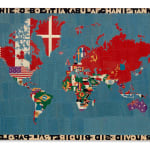


Alighiero Boetti Italian, 1940-1994
Mappa, 1983-84
Embroidery
114 x 168 cm. (44 7/8 x 66 1/8 in.)
Copyright The Artist


